Chlorine is an effective disinfectant that kills bacteria. This is why municipal water suppliers add it or chloramines (chlorine with ammonia) to drinking water, staying within the U.S. Environmental Protection Agency’s (EPA) regulations of 4 parts per million (ppm).
However, chlorine can give water an unpleasant taste and a ‘bleach-like’ smell that most people find unpleasant.
So, what’s the best way to remove chlorine from water? The most effective way to remove chlorine from water is through reverse osmosis filtration, which reduces chlorine by up to 99%. Boiling water for 15 – 20 minutes is also another quick way to dechlorinate tap water.
You can learn more about chlorine water filtration by reading our article on water filters that removes chlorine.
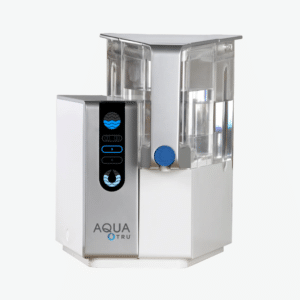
- Filtration technology: Activated carbon + reverse osmosis
- Filter type: Countertop reverse osmosis system
- Chlorine reduction rate: Minimum of 96.6%
- Contaminants removed: 82
- Filtered water capacity: One gallon
- NSF 42 certification: Certified
- Warranty: One year
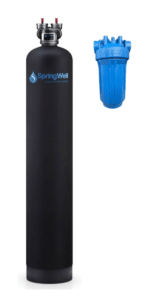
- Filtration technology: KDF & catalytic carbon
- Filter type: Whole house filter
- Chlorine reduction rate: Minimum of 99%
- Contaminants removed: Unspecified
- Flow rate: 9 – 17 GPM (1 to 7 bathrooms)
- NSF 42 certification: Not certified
- Warranty: Lifetime

- Filtration technology: High-performance catalytic-activated carbon block technology
- Filter type: Cartridge-based whole house filter
- Chlorine reduction rate: Unspecified
- Contaminants removed: Unspecified
- Flow rate: 15 GPM (1 to 6 bathrooms)
- NSF 42 certification: Not certified
- Warranty: Lifetime
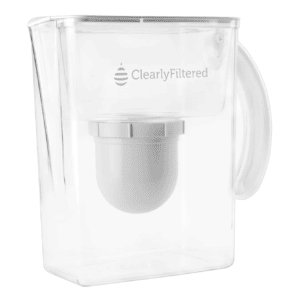
- Filtration technology: Affinity Filtration
- Filter type: Water filter pitcher
- Chlorine reduction rate: Minimum of 99.5%
- Contaminants removed: 365+
- Filtered Water Capacity: 10 cups (80oz)
- NSF 42 certification: Certified
- Warranty: Lifetime
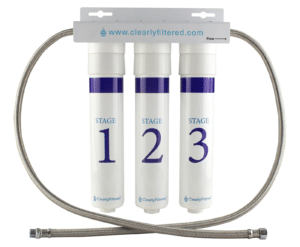
- Filtration technology: Clearly Filtered 3-stage filtration tech
- Filter type: Under-the-sink system
- Chlorine reduction rate: Minimum of 98.6%
- Contaminants removed: 232+
- Filtration capacity: 2,000 gallons for each filter (lasting roughly a year)
- NSF 42 certification: Certified
- Warranty: Lifetime
How to Remove Chlorine From Water (Dechlorination)
1. Remove Chlorine with Reverse Osmosis Filtration
Reverse osmosis is another common method to remove 97.3% of chlorine in water.
Unlike a water distiller, a reverse osmosis system uses pressure to remove impurities instead of heat. Water molecules are forced through the semi-permeable membrane (filter) and as the chlorine molecules are too large to pass through the membrane, they get flushed away as water water.
This method relies on the effectiveness of the reverse osmosis membrane in the system and the pump’s ability to flush away the leftover contaminants after the clean water has been pushed through.
Water dechlorination via reverse osmosis can be expensive especially considering that you need to change the filter regularly to maintain a high degree of effectiveness. A filter left for extended periods without being changed can become a breeding place for bacteria.
If you choose to remove chlorine via reverse osmosis, we recommend the AquaTRU reverse osmosis system for this purpose.
2. Use Water Distillers (Distillation) to Remove Chlorine
Distillation is one of the easiest and most practical ways to eliminate 97% of chlorine in water. A water distiller boils the water to vapor, allows it to condense, and separates impurities, leaving just distilled water.
Water distillers can be purchased online or at any department store at a variety of price points depending on the size of the distiller, which can range from countertop size to large commercial units.
Using a water distiller will remove 97% of chlorine, but adding activated carbon filters before the water reaches the distiller can aid in the removal of up to 99% of chlorine.
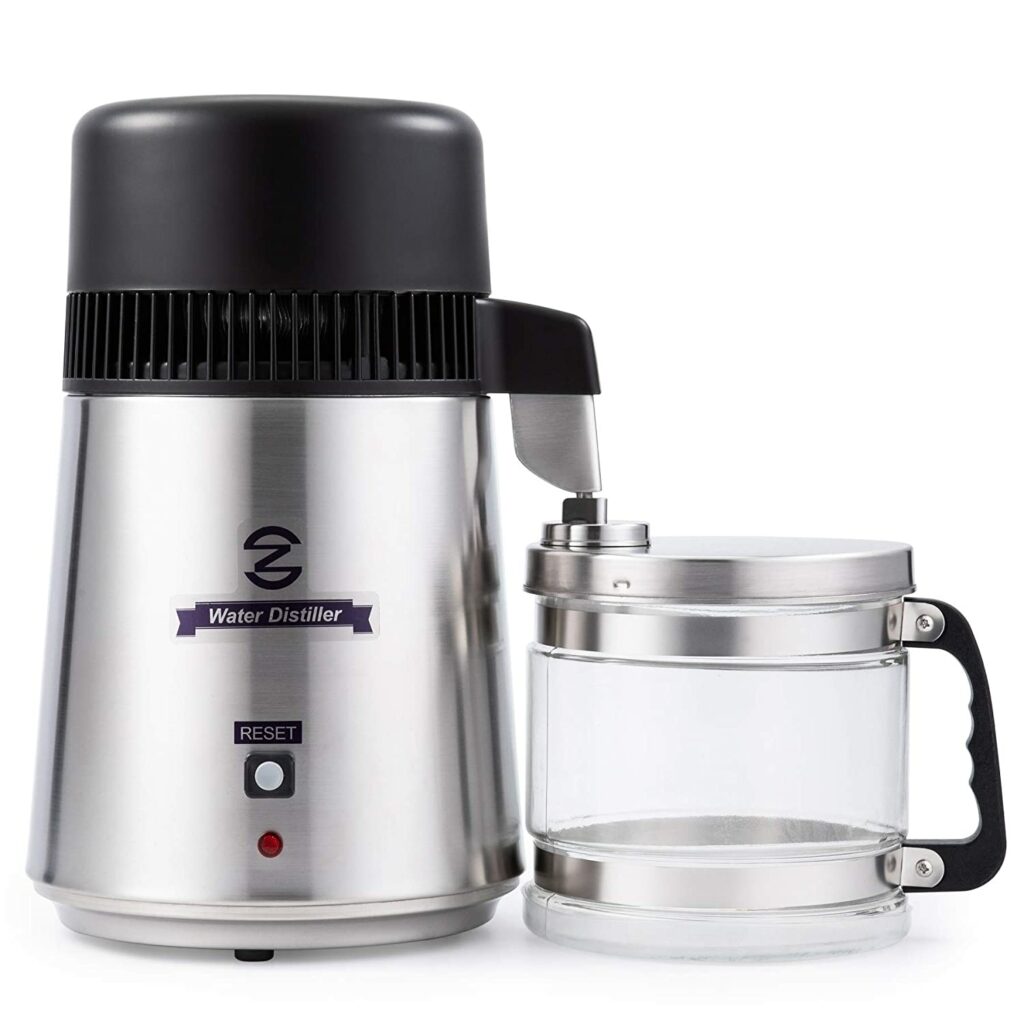
As an added benefit, water distillers can also remove other unwanted additives that can affect the water’s taste and smell, such as:
- Fluoride
- Bromine
- Astatine
- Iodine ions
However, the downside is that the distillation process is very slow and not recommended for treating large volumes of water. This is why we recommend using the reverse osmosis process instead.
If you choose to remove chlorine via distillation, we recommend the Megahome Countertop Distiller for this purpose.
3. Boil the Water
Boiling water before use, called a boil order, when mandated by local government, is common practice in areas where water treatment facilities go offline or if circumstances allow for contaminants to build to dangerous levels.
Just like the first stage of distillation, after boiling for at least 15 minutes, the chlorine is boiled away, escaping as a gas with the water vapor into the atmosphere.
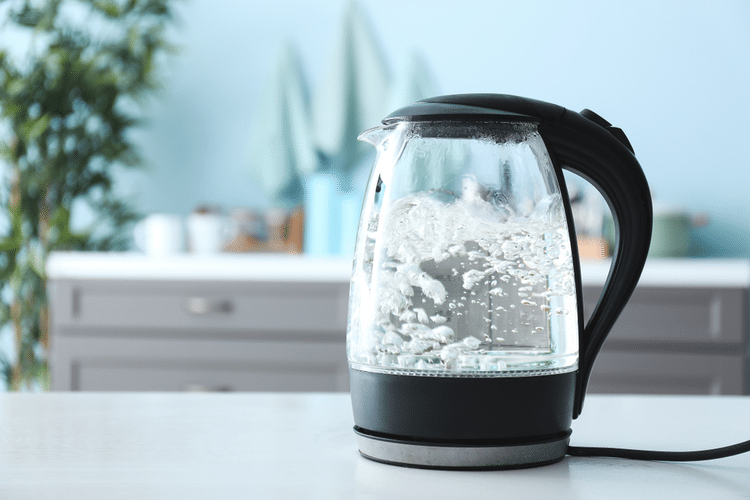
Removing chlorine via boiling can be time-consuming if a large amount of water is needed or if the water needs to be cooled again before use, but it requires no additional equipment other than a stovetop and pot.
4. Use a UV Light Purifier
High-intensity UV light can turn chlorine to easy to remove byproducts. When the wavelength of light sits between 180 and 400 nm, the UV light can produce a photochemical reaction that changes the free chlorine in the water into the elements necessary to form hydrochloric acid that you can remove.
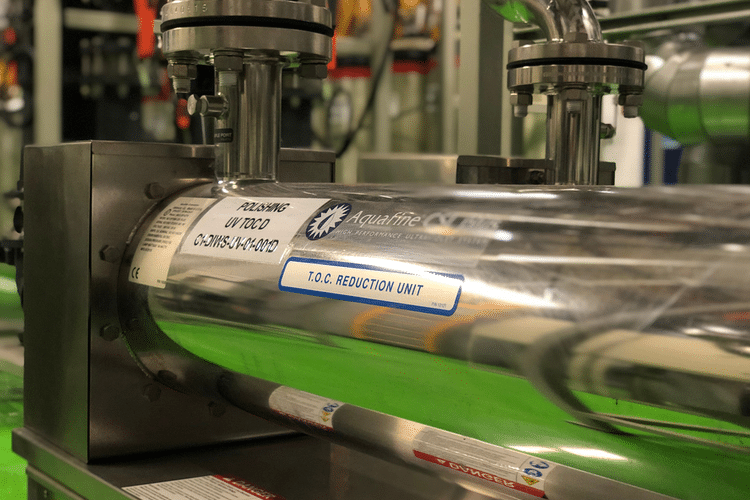
This method relies on relatively clear water to be effective and won’t filter out dissolved impurities as some other processes will. For small amounts of clear water, UV light purifier can be beneficial for removing chlorine.
5. Use Activated Carbon Filters to Remove Chlorine
An activated carbon filter can remove chlorine on its own but works better when paired with another treatment method like reverse osmosis, distillation, or UV light treatment.
The carbon filter removes additional impurities, improves taste, and helps purify the water before it reaches the next stage of chlorine removal.
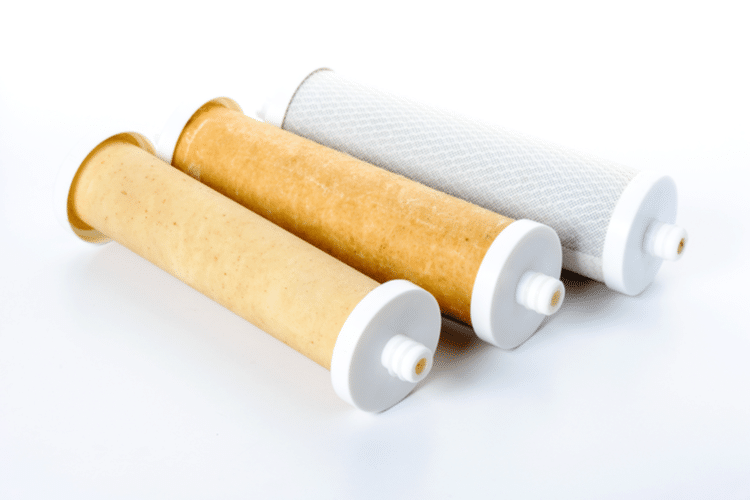
If you choose to remove chlorine via this method, make sure the filter you purchase has an NSF 42 logo on the packaging. This symbol indicates that it can work with chloride levels between 3 and 0.5 ppm, which is the usual chlorine level for tap water in the US.
6. Let the Water Evaporate
Chlorinated water left out for 1 – 5 days will have a reduced chlorine level due to natural evaporation. Like boiling or distilling, chlorine evaporates with the water vapor leaving just water behind.
This method won’t remove all the chlorine from water, and it takes longer than the mechanical treatment methods, but it is inexpensive and requires no special equipment.
How to Test Chlorine Levels in Your Water
1. Use Pool Test Kits
Pool owners use these kits to test the water and ensure the levels of added chlorine are balanced. The kits are available in various styles, but one of the most common is to use a liquid chemical orthotolidine (OTO).
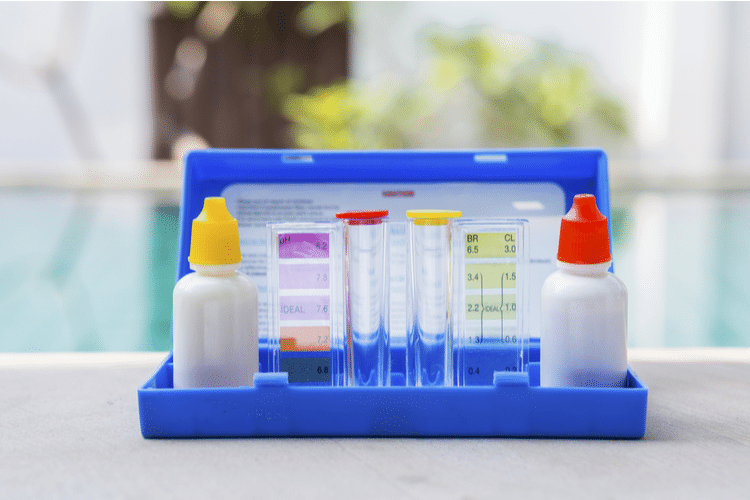
Liquid OTO reacts in chlorine’s presence by turning bright yellow, making it a great indicator. Testing is as simple as filling the tube with water from the source, applying the orthotolidine, and waiting to see what happens. Keep in mind that the amount of chlorine will impact how yellow the water turns after the OTO is added. The water will only turn vibrant to dark yellow if it is pure chlorine.
It’s more likely to turn translucent or pale yellow if chlorine is present in water since the amount of chlorine will likely be very small.
Test strip-style kits are also available. With these, you dip the strip into the water, which changes to a color shade almost immediately corresponding to the chlorine level in the sample.
Pool test kits can be purchased online, in big department stores, through pool supply stores, and even from home improvement stores.
2. Use Color Wheel Test Kit
Another option available is a color wheel test kit that measures free and total chlorine. This highly portable, accurate, and affordable option uses a reagent in the form of an organic compound diethyl-p-phenylenediamine (DPD) solution.
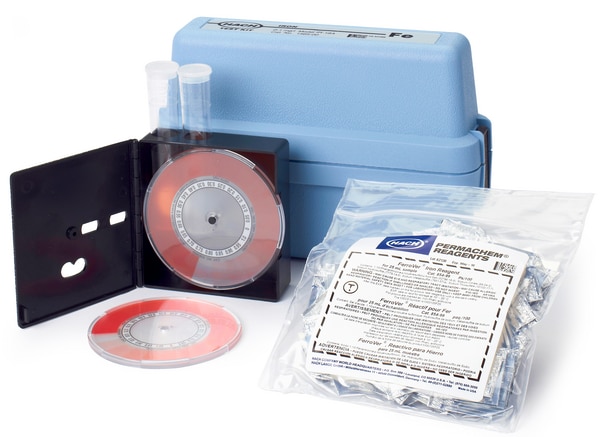
Whether in a powder or a tablet form, after adding the chemical DPD to water, the reagent reacts to chlorine and other disinfectants and changes the color of the water to pink. The great thing about this method is that you can determine the chlorine concentration in your water.
When you purchase this test kit, it comes with a color wheel that you can compare to your water. Depending on the color and shade your water turns, you will be able to determine the chlorine concentration in the water.
3. Digital Colorimeters
The most accurate testing method available is a digital colorimeter. It is a standard testing method by scientists working in developing countries to test and measure free chlorine in their drinking water.
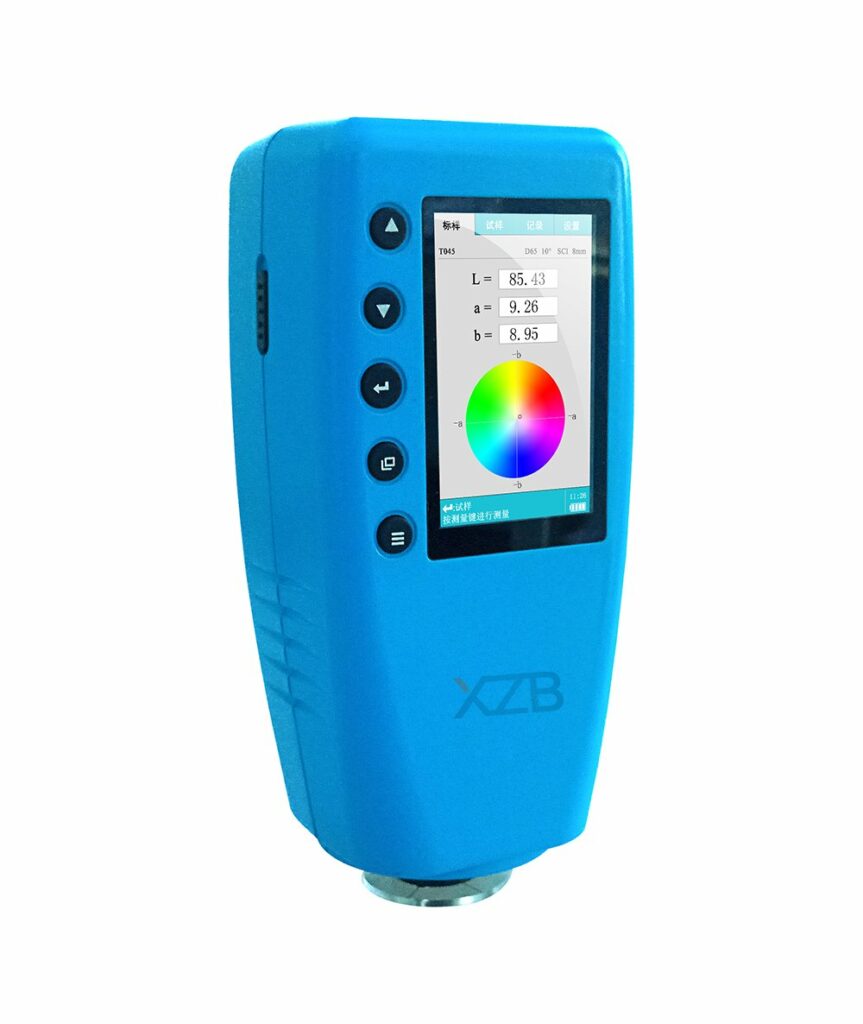
Similar to a color wheel test kit, you place DPD tablets or powder in a vial of sample water. The DPD reacts to the free chlorine in the water and causes the water to turn pink.
You can then insert the vial into the digital colorimeter, which determines the intensity of the color change by emitting a wavelength of light and measuring it.
The meter determines the color intensity and provides a range of chlorine concentrations. This method is the most accurate and delivers fast results without the need for laboratory equipment.
The only downside is that it is expensive to purchase this test kit compared to other methods.
Frequently Asked Questions
Chlorine is added to residential water during the water treatment process as a disinfectant to prevent germs from contaminating.
The addition of chlorine can also impede or prevent the growth of harmful viruses, bacteria, and microorganisms such as salmonella and the norovirus.
Drinking water with small amounts of chlorine has been proven safe in otherwise healthy adults over a long period.
However, if there is excessive chlorine in your water or the person suffers from another illness, you can experience adverse health effects that are unpleasant and even dangerous.
Common health effects are upset stomach, vomiting, and diarrhea from drinking chlorinated water and dry skin from using it to bathe.
The CDC states that it is safe to have up to four parts per million of chlorine in your water.
Several things can tip you off that your drinking water has abnormally high chlorine levels, but the most obvious ones are the smell, taste, and appearance of your water.
Water with high levels of chlorine can smell like a pool. This is because chlorine is added to swimming pools to help reduce the risk of microorganisms growing. Others report smelling bleach for a similar reason. It may have an unusual or unpleasant taste, either tasting like it smells or an unrecognizable chemical taste.
Highly chlorinated water also appears discolored. The water may appear hazy, rusty-colored, or have an unappealing greenish or yellow hue.
The cheapest way to remove chlorine from your drinking water is through boiling the water or purchasing a standalone water distiller (distillation method).
Baking soda can effectively remove chlorine residue from your hair but cannot directly reduce chlorine levels in the water.
It can assist other chemical processes, however. It increases alkalinity when added to water, allowing other chemical neutralizers to react with the dissolved chlorine.
Yes, letting water sit removes chlorine over time. If left to sit at room temperature, chlorine becomes gaseous and will escape with evaporating water.